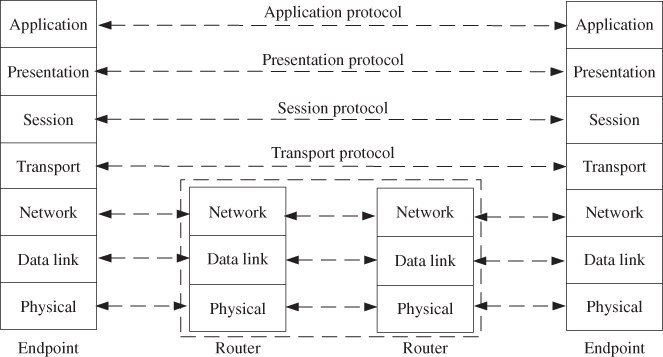Chapter 8Transport Layer – TCP and UDP
8.1 Introduction
In this chapter, we discuss the transport layer protocols. As discussed in Chapter 1, the transport layer provides reliable communication between the source and the sink. Two protocols were originally defined in this layer, namely, the Transmission Control Protocol (TCP), which is a connection-oriented protocol that provides reliable end-to-end transfer, and the User Datagram Protocol (UDP), which is an unreliable connectionless protocol that was designed for applications that do not need the reliability and overhead of TCP. Two other protocols have recently been defined to address some of the shortcomings of TCP and UDP. These are the Stream Control Transmission Protocol (SCTP), which, like TCP, is a connection-oriented protocol that provides reliable end-to-end transfer and the Datagram Congestion Control Protocol (DCCP), which was designed to inherit some of the features of TCP and some of the features of UDP. In this chapter, we discuss TCP and UDP and defer the discussion on SCTP and DCCP to Chapter 9.
Transport layer protocols are the first end-to-end protocols in the OSI reference model. As can be seen in Figure 8.1, protocols in the first three lowest layers operate on a hop-by-hop basis.

Figure 8.1 Spans of the Protocols in the Different Layers of the OSI Model.
Transport-layer protocols are usually classified ...
Get Fundamentals of Data Communication Networks now with the O’Reilly learning platform.
O’Reilly members experience books, live events, courses curated by job role, and more from O’Reilly and nearly 200 top publishers.

